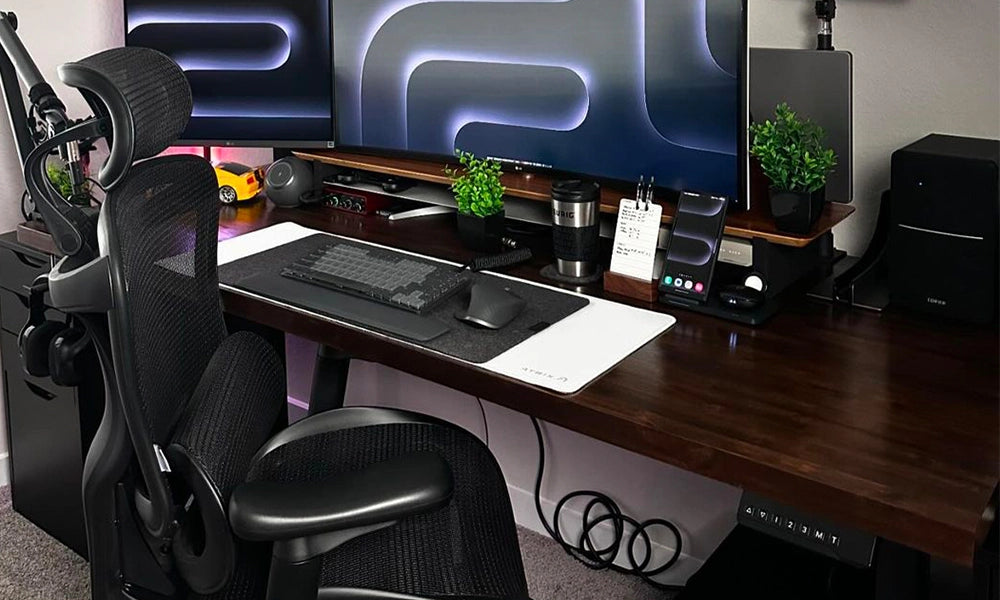In the modern workplace, where many of us spend hours seated at a desk, the comfort of our office chair plays a crucial role in our productivity and overall well-being. A poorly designed or uncomfortable chair can lead to discomfort, fatigue, and even long-term health issues like back pain. However, with a few adjustments and additions, you can transform your office chair into a supportive and comfortable seat that enhances your workday experience.
Understanding Ergonomics
Ergonomics is the science of designing environments and products to be user-friendly, efficient, and comfortable. When it comes to office chairs, ergonomic principles are essential for promoting good posture and reducing strain on your body. Here are some key ergonomic considerations for making your office chair more comfortable:
- Adjustability: A good office chair should be highly adjustable to accommodate different body types and preferences. Look for chairs with adjustable seat height, armrest height and width, lumbar support, and tilt tension.
- Lumbar Support: Proper lumbar support maintains the natural curve of your spine, preventing slouching and supporting the lower back. If your chair lacks adequate lumbar support, consider using a lumbar support cushion.
- Seat Depth and Width: The seat should be deep and wide enough to comfortably support your thighs and hips without restricting circulation. You should be able to sit with your back against the chair and still leave a few inches between the edge of the seat and your knees.
- Armrests: Adjustable armrests are crucial for supporting your arms and shoulders. They should be at a height that allows your shoulders to relax and your elbows to be at a 90-degree angle when typing.
- Seat Height: Proper seat height ensures that your feet are flat on the floor (or on a footrest) with your knees at a 90-degree angle. Adjust the height so that your thighs are parallel to the ground.
DIY Tips to Enhance Comfort
Beyond the basic ergonomic adjustments, there are several do-it-yourself (DIY) tips and tricks you can employ to make your office chair more comfortable:
- Seat Cushion: If your chair's seat is too firm or lacks padding, consider adding a seat cushion to provide extra support and comfort. Memory foam cushions or gel cushions are popular choices.
- Footrest: If your chair is too high for your feet to rest flat on the ground, use a footrest or a stack of books to support your feet. This helps in maintaining proper posture and reducing strain on your legs.
- Neck Support: If your chair doesn't have a built-in headrest, consider using a neck pillow or a rolled-up towel to support your neck and prevent stiffness.
- Armrest Pads: If your chair's armrests are uncomfortable or too hard, consider adding padded armrest covers or using gel pads to make them softer.
- Back Support: In addition to lumbar support, you can improve back support by placing a rolled-up towel or a small cushion between the curve of your lower back and the chair.
Enhancing Comfort with Accessories
In addition to DIY adjustments, there are various accessories available that can further enhance the comfort and functionality of your office chair:
- Monitor Arms: Adjustable monitor arms allow you to position your computer screen at eye level, reducing neck strain and promoting better posture.
- Keyboard Tray: A keyboard tray that adjusts in height and tilt can help you maintain a comfortable typing position and prevent wrist strain.
- Desk Lamp: Proper lighting is essential for reducing eye strain. A desk lamp with adjustable brightness and positioning can improve your workspace environment.
- Cable Management: Cluttered cables can be distracting and hazardous. Use cable management tools to keep wires organized and out of the way.
- Foot Hammock: For ultimate relaxation, consider a foot hammock that attaches under your desk, allowing you to elevate your feet comfortably during breaks.
Maintenance and Longevity
Regular maintenance is key to ensuring your office chair remains comfortable and functional over time:
- Cleaning: Periodically clean your chair to remove dust, dirt, and spills. Follow the manufacturer's guidelines for cleaning materials and methods.
- Inspect and Adjust: Regularly check the adjustment mechanisms and components of your chair. Tighten screws, lubricate moving parts, and replace worn-out parts as needed.
- Replace if Necessary: If your chair becomes irreparably uncomfortable or no longer supports you adequately despite adjustments, consider investing in a new chair that better suits your needs.
Conclusion
Your ergonomic office chairs is more than just a piece of furniture—it's a tool that can significantly impact your comfort, health, and productivity. By applying ergonomic principles, making DIY adjustments, and incorporating helpful accessories, you can transform any office chair into a comfortable and supportive seat tailored to your needs. Remember, a comfortable workspace isn't just about the chair itself but also about how you interact with it and the environment you create around it. Take the time to evaluate your chair and make the necessary changes to ensure a comfortable and productive workday. Your body will thank you for it!



































